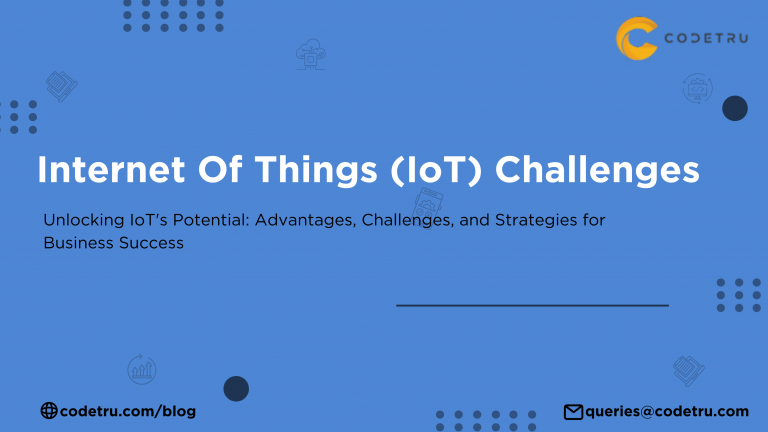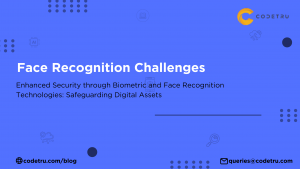It is estimated that by 2025, the impact of IoT (Internet of Things) devices on the global economy will be more than $11 trillion. Some industry experts anticipate that by 2025 there will be over 100 billion IoT devices connected across the globe. With such a massive share in the global economy, IoT is getting a special place in digital transformation. On a technology side, IoT is about devices, sensors, IP networks, gateways, sensor arrays, and the list goes on. However, enterprises hope IoT for solve business-related problems or create new disruptions in business models.
Users can look forward to achieving deep automation, and analysis, and it also enables ease of integration within the system. Digital transformation enables industries such as manufacturing, Logistics, Retail, Automotive, and the like to make the best out of IoT Devices.
IoT: Tackling Challenges in Enterprises
There is a phenomenal opportunity presented by the IoT to enterprises and businesses can now deliver exceptional outcomes, enhance customer services, create new and tangible revenue schemes, improve product efficiency and so on. The boom in digital transformation helps enterprises to make things all the more efficient and intelligent. Let’s talk about some of the key features in this novel world of IoT that is rapidly changing the world.
Artificial Intelligence
This is one of the key features that help enterprises implement several solutions for their clientele. The value of insight from data collection and analysis is tremendous and IoT uses these insights to make things even more smarter. Take a retail outlet for example. If the aisle of orange juice has increased footfall and is running out faster than usual, the enhanced technology with the help of AI (Artificial Intelligence) will process the information and then order the set amount in the inventory. Artificial Intelligence helps enhance productivity, reduces manual efforts, and helps enterprises to focus on areas that need human interference.
Enhanced Connectivity
From the perspective of data and communication, connectivity leverages IoT. There is a huge amount of data added to network and connectivity as IoT grows. Our world is still keeping up with the digital transformation and the boom in IoT, but the core is all about connectivity. With the exceptional growth in the IoT devices, the network is no longer tied with the major service providers in the market. However, the network and connectivity can still be made practical on a small scale and at a less expensive cost. IoT makes it possible to create many of these small networks between the system devices.
Effective Use of Sensors
Real-world integration is crucial for enterprises to operate efficiently. The use of sensors in IoT transforms a standard passive network into a completely different and real-world integration. For example, logistic companies can be on top of their game with the effective use of sensors. The strategic use of sensors helps logistic companies keep a tab on their fleet of vehicles and their exact location at any given time. Sensors provide real-time data that further helps the company to know the time required for delivery, the route, and driver capabilities. This information helps the companies be more efficient in their services.
Technology Engagement
The shift to engagement in technology is made possible by IoT. There exists passive engagement in connected technology. IoT helps to bring out a radical change for enterprises that have to create active content, create new products, and also create service engagements for businesses.
Custom Made Devices
Enterprises can make use of the shift from passive engagement to active engagement. Industries such as manufacturing can use small and custom built devices to help with delivering precision, versatility, and scalability in their production. This helps the industries not just save on the cost but also on the efforts in the long term.
The above key features with the help of IoT devices help enterprises plan and execute their strategy well in the digital transformation journey. If you are catching up on making the best use of IoT, the advantages discussed in the below section will help you in decision-making.
Top Advantages of IOT
IoT helps every industry out there make the best out of digital technology, here are some of the top advantages that we’d like to share.
Enhanced Customer Service
Enhanced Customer Service Customer service is one of the most crucial but still a challenging feat for most businesses. Engagement with customers often remains passive due to the lack of accuracy in customer insights. IoT changes this with efficiency by enabling businesses with a richer and accurate customer engagement. This helps provide enhanced customer service in the long term.
Tap into a World of Resources
IoT helps businesses tap into a world of resources. Customer data and analysis helps businesses to tap into a world of resources. Apart from making significant changes to the technology, it also helps business achieve more functional data that can be further used to pan the future strategies.
Efficient Resource Management
Real world information from IoT helps us identify flaws in the existing systems and enhance it further. The insights help businesses in effectively managing the resources.
Data Accuracy
IoT breaks silos in data collection possible today with passive engagement. It helps businesses with data accuracy and this enables them develop and implement effective technology
Some of the Disadvantages
When we talk about IoT, we often look at the advantages. However, it is important to note that there are also certain disadvantages that we need to look at in order to get a complete picture.
- IoT makes it possible to create a healthy ecosystem wherein devices connect and communicate with each other. Although strict security measures are being implemented in most cases, the users are still exposed to attackers trying to get into their system.
- Even without the active participation of the users, the user’s substantial personal data may be easily accessible to others.
- There is a large set of new technologies and systems that are used in IoT, and this makes some users feel it is more complicated in terms of planning, maintenance, deployment, and so on.
- Concern over whether or not the IoT systems will easily collaborate with the other systems holds many back from using them.
- Some feel that since it looks complicated from the outside, compliance with technology may be equally difficult.
As we discussed above, IoT has made a rapid shift in how a technology is perceived and how the best is achieved from the same. Businesses with the view to tackle real-world challenges in the future need to ensure that they make the best of IoT today. IoT enables enterprises to do a lot more in terms of delivery, production, and maintenance of business. If you are looking to implement IoT solutions, it will help to get professional help in this regard.
Codetru has emerged as a leader in IoT. The company has handled several complex integration and maintenance projects in the recent past. We have top-notch talent with exposure to the global community. Our team will closely examine your IoT requirements and will be happy to partner with you on your digital transformation journey.
Frequently Asked Questions About IoT
1. What are the key challenges of implementing IoT in enterprises?
Implementing IoT in enterprises comes with challenges such as ensuring robust security measures to protect data from cyber-attacks, integrating IoT systems with existing infrastructure, managing the complexity of IoT devices and networks, and addressing concerns about data privacy and compliance with regulations.
2. How does IoT enhance customer service?
IoT enhances customer service by providing businesses with accurate and real-time customer insights. This enables companies to engage with customers more effectively, tailor their services to meet customer needs, and provide proactive support, leading to improved customer satisfaction and loyalty.
3. What industries benefit the most from IoT technology?
Industries such as manufacturing, logistics, retail, automotive, and healthcare benefit the most from IoT technology. These sectors leverage IoT for automation, real-time monitoring, predictive maintenance, supply chain optimization, and enhanced customer experiences, driving efficiency and innovation.
4. How can IoT improve resource management in businesses?
IoT improves resource management by providing real-time data and insights into the utilization of resources. This helps businesses identify inefficiencies, optimize resource allocation, reduce waste, and enhance operational efficiency. IoT-enabled sensors and devices allow for precise monitoring and control of resources.
5. What are the potential disadvantages of IoT technology?
Potential disadvantages of IoT technology include security vulnerabilities, data privacy concerns, complexity in planning and deployment, interoperability issues with existing systems, and the need for ongoing maintenance and updates. Despite these challenges, the benefits of IoT often outweigh the drawbacks for many businesses.







